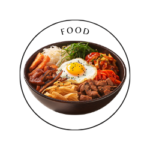 Mind
Mind
- Digital and Modern Well-being
- Mental Health and Emotional Well-being
- Mind-Body Connection and Holistic Health
- Parenting and Family
- Personal Growth and Development
- Relationships and Social Well-being
- Stress and Relaxation
- Therapeutic and Creative Practices
- Trauma and Recovery
- Work, Productivity, and Discipline
 Body
Body
 Fitness
Fitness
 Food
Food
 Beauty
Beauty
Competitive Fitness Training

Key Elements of Competitive Fitness Training
To succeed in competitive fitness, your training should address multiple areas of athleticism. These include:
-
Strength Training
Strength is a fundamental aspect of competitive fitness, especially when it comes to weightlifting and bodyweight movements. Building strength in major muscle groups is essential, with a focus on movements like squats, deadlifts, cleans, snatches, and bench presses. Incorporating functional strength exercises such as kettlebell swings and pull-ups also improves overall athleticism. -
Endurance and Conditioning
Cardiovascular fitness is key for maintaining energy levels during high-intensity workouts. Running, rowing, cycling, and swimming are great ways to build endurance. High-intensity interval training (HIIT) and longer endurance sessions help prepare the body to sustain prolonged exertion. -
Power and Explosiveness
Power-based exercises focus on rapid movements that require muscle speed and force, such as box jumps, sprints, and Olympic lifts. Developing power helps with dynamic movements in competitions, from throwing medicine balls to sprinting through obstacles. -
Mobility and Flexibility
Flexibility and mobility play a significant role in competitive fitness training. To prevent injury and improve performance, athletes must prioritize mobility exercises and stretching, especially for the hips, shoulders, and lower back. -
Agility and Coordination
Many fitness competitions involve obstacle courses or other movements that require a high level of coordination, balance, and agility. Plyometric exercises, ladder drills, and agility cone drills are excellent for improving these attributes. -
Recovery and Nutrition
Competitive fitness training is intense, and recovery is crucial to avoid burnout or injury. Incorporate rest days, active recovery, stretching, and proper nutrition to support muscle repair and replenish energy levels.
Types of Competitive Fitness Events
There are many types of fitness competitions, each testing different aspects of fitness. Here are some of the most popular:
-
CrossFit Competitions: These events test athletes across multiple domains of fitness, such as weightlifting, gymnastics, and endurance exercises. The CrossFit Games are the pinnacle, with athletes competing in various unpredictable events to determine the “Fittest on Earth.”
-
Spartan Races: Obstacle course races like the Spartan Race combine running with challenges like crawling under barbed wire, carrying heavy objects, and climbing walls. These races test endurance, strength, and mental toughness.
-
Functional Fitness Competitions: Similar to CrossFit, these competitions focus on functional movements and real-life challenges. Events often include lifting, running, pulling, and jumping, but can vary widely.
-
Strongman Competitions: These events emphasize raw strength, with competitors performing tasks like lifting atlas stones, flipping tires, and pulling trucks. Power and strength are the primary focus.
-
Endurance Challenges: Ultramarathons, Ironman triathlons, and other endurance events test an athlete’s ability to sustain physical activity for hours or even days, pushing their limits of endurance and mental fortitude.
How to Get Started with Competitive Fitness Training
-
Set Clear Goals: Define what you want to achieve. Are you training for a specific event, such as a CrossFit competition or Spartan Race? Or are you looking to improve your overall fitness? Having a clear goal will help shape your training plan.
-
Find a Coach or Program: Whether you’re a beginner or advanced athlete, having a coach or structured training program is essential. They can provide expert guidance on technique, programming, and recovery, and help you avoid injury.
-
Join a Community: Many gyms or fitness centers offer group training programs geared toward competitive fitness. Surrounding yourself with supportive and like-minded individuals can motivate you and help push your limits.
-
Train for Balance: Competitive fitness requires a balance between strength, endurance, power, and agility. Tailor your training plan to improve all aspects of fitness, and don’t neglect areas where you may be weaker.
-
Prioritize Recovery: Training for competition is taxing, both physically and mentally. Incorporate proper rest, stretching, and mobility exercises into your routine. Nutrition plays a significant role too—ensure your diet is aligned with your training intensity.
Final Thoughts
Competitive fitness training isn’t just about winning—it’s about challenging yourself, building resilience, and improving your overall fitness. Whether you’re aiming for the CrossFit Games or simply want to push your limits, competitive fitness offers a well-rounded and exciting approach to training. With the right mindset, preparation, and support, anyone can enjoy the benefits of competitive fitness and grow both physically and mentally from the experience.
